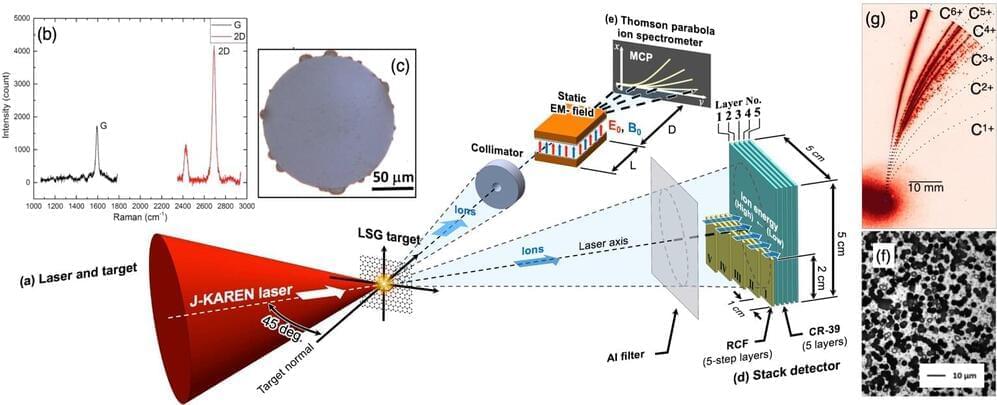Laser-driven ion acceleration has been studied to develop a compact and efficient plasma-based accelerator, which is applicable to cancer therapy, nuclear fusion, and high energy physics. Osaka University researchers, in collaboration with researchers at National Institutes for Quantum Science and Technology (QST), Kobe University, and National Central University in Taiwan, have reported direct energetic ion acceleration by irradiating the world’s thinnest and strongest graphene target with the ultra-intense J-KAREN laser at Kansai Photon Science Institute, QST in Japan. Their findings are published in Nature’s Scientific Reports.
It is known that a thinner target is required for higher ion energy in laser ion acceleration theory. However, it has been difficult to directly accelerate ions with an extremely thin target regime since the noise components of an intense laser destroy the targets before the main peak of the laser pulse. It is necessary to use plasma mirrors, which remove the noise components, to realize efficient ion acceleration with an intense laser.
Thus, the researchers have developed large-area suspended graphene (LSG) as a target of laser ion acceleration. Graphene is known as the world’s thinnest and strongest 2D material, which is suitable for laser-driven ion sources.









Comments are closed.